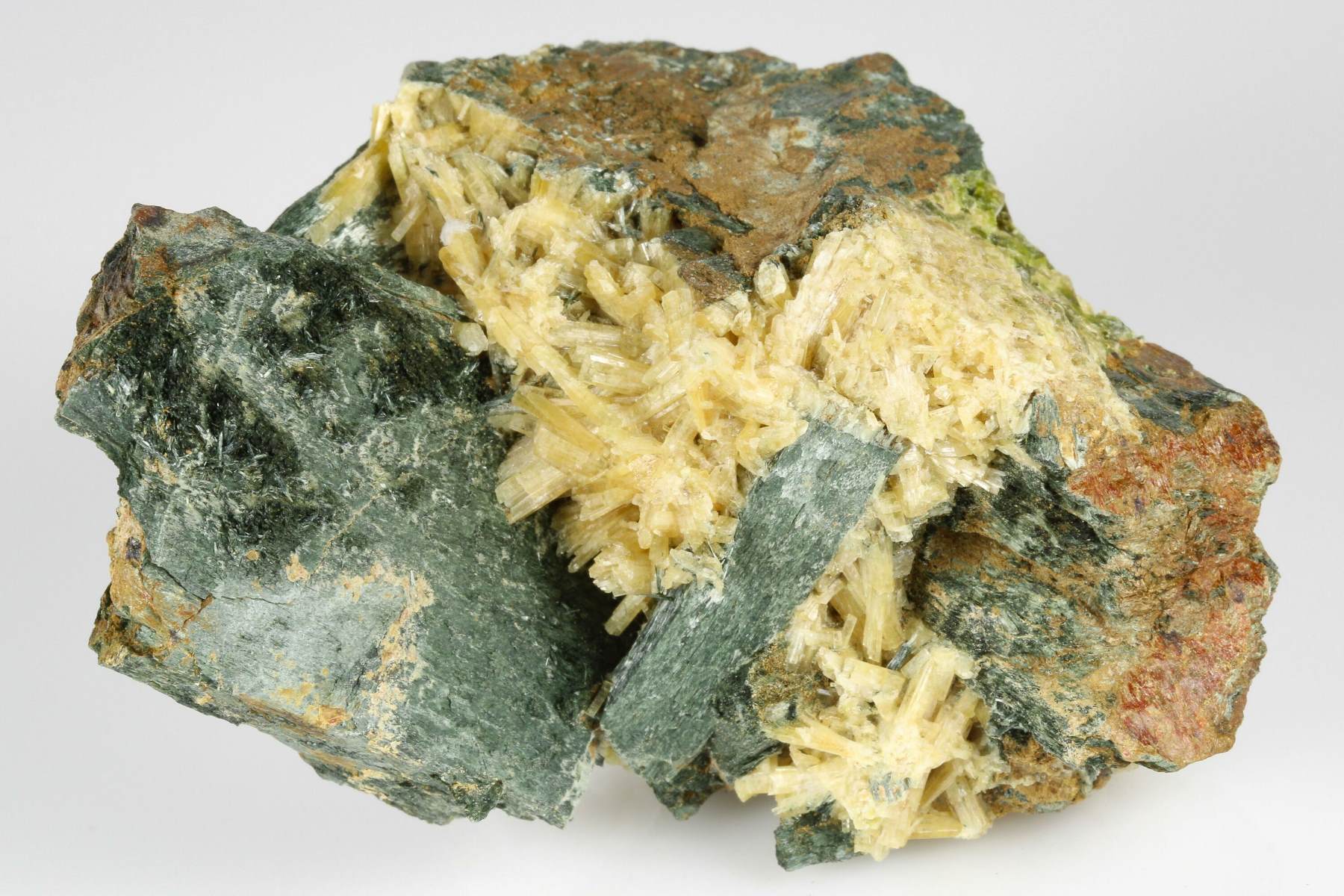
Clinozoisite is a fascinating mineral that often goes unnoticed. Found in metamorphic rocks, it belongs to the epidote group and is known for its unique crystal structure. This mineral typically appears in shades of green, yellow, or brown, making it visually striking. Clinozoisite is not just a pretty face; it has practical uses too. It's often used in geological studies to understand the conditions under which rocks form. Additionally, it has some industrial applications, particularly in ceramics and as a gemstone. Whether you're a geology enthusiast or just curious about minerals, learning about Clinozoisite can be both educational and intriguing.
Key Takeaways:
- Clinozoisite is a fascinating mineral with a unique crystal structure and color, often found in metamorphic rocks. It has various uses, from gemstones to industrial applications, and can provide valuable insights into geological processes.
- Its formation in specific geological conditions, such as metamorphism and hydrothermal veins, makes clinozoisite a valuable indicator mineral for understanding the pressure and temperature conditions of rock formation. It is also used in ceramics, glass production, and as a source of aluminum in industrial processes.
What is Clinozoisite?
Clinozoisite is a fascinating mineral that belongs to the epidote group. It is often found in metamorphic rocks and can be identified by its distinct crystal structure and color. Let's dive into some intriguing facts about this mineral.
- Clinozoisite is a calcium aluminum sorosilicate mineral.
- It typically forms in metamorphic rocks such as schist and gneiss.
- The mineral is often found in association with other minerals like quartz and feldspar.
- Clinozoisite has a monoclinic crystal system, meaning its crystals are shaped like skewed rectangles.
- Its color ranges from green to brown, sometimes appearing nearly colorless.
- The mineral has a Mohs hardness of 6 to 7, making it relatively hard.
- Clinozoisite is often transparent to translucent.
- It has a vitreous to pearly luster, giving it a shiny appearance.
- The mineral was first described in 1896 by Austrian mineralogist Friedrich Becke.
- Clinozoisite can be found in various locations around the world, including Austria, Italy, and the United States.
Chemical Composition and Properties
Understanding the chemical composition and properties of clinozoisite can give us deeper insights into its formation and uses.
- Clinozoisite's chemical formula is Ca2Al3(Si2O7)(SiO4)O(OH).
- It belongs to the epidote group, which includes minerals with similar structures and compositions.
- The mineral contains calcium, aluminum, silicon, oxygen, and hydrogen.
- Clinozoisite is known for its high refractive index, which measures how much light bends as it passes through the mineral.
- It has a specific gravity of 3.2 to 3.4, indicating its density.
- The mineral is pleochroic, meaning it can show different colors when viewed from different angles.
- Clinozoisite is often used as a gemstone, though it is not as popular as other gemstones.
- It can fluoresce under ultraviolet light, sometimes showing a weak yellow or green glow.
- The mineral is resistant to chemical weathering, making it durable in various environments.
- Clinozoisite can form solid solutions with epidote, another mineral in the same group.
Formation and Occurrence
Clinozoisite forms under specific geological conditions, often in metamorphic environments. Let's explore where and how it forms.
- The mineral typically forms during the metamorphism of calcium-rich rocks.
- It can also form in hydrothermal veins, where hot, mineral-rich water flows through cracks in rocks.
- Clinozoisite is often found in contact metamorphic zones, where rocks are altered by heat from nearby magma.
- The mineral can also occur in regional metamorphic zones, where large areas of rock are subjected to high pressure and temperature.
- Clinozoisite is commonly found in alpine-type metamorphic rocks, which form in mountainous regions.
- It can also be found in skarns, which are metamorphic rocks formed by the interaction of magma with carbonate rocks.
- The mineral is often associated with other metamorphic minerals like garnet, chlorite, and actinolite.
- Clinozoisite can be found in both high-grade and low-grade metamorphic rocks, depending on the temperature and pressure conditions.
- The mineral is often found in elongated, prismatic crystals, though it can also occur in massive or granular forms.
- Clinozoisite is sometimes found in sedimentary rocks that have been subjected to low-grade metamorphism.
Uses and Applications
Though not as well-known as other minerals, clinozoisite has several interesting uses and applications.
- Clinozoisite is sometimes used as a gemstone, though it is not as popular as other gemstones like diamond or sapphire.
- The mineral is often used in geological studies to understand the conditions under which metamorphic rocks form.
- Clinozoisite can be used as an indicator mineral in metamorphic petrology, helping geologists identify the pressure and temperature conditions of rock formation.
- The mineral is sometimes used in the production of ceramics and glass, due to its high melting point and chemical stability.
- Clinozoisite can also be used as a source of aluminum in industrial processes.
- The mineral is sometimes used in the production of refractory materials, which are resistant to high temperatures and used in furnaces and kilns.
- Clinozoisite is occasionally used in the production of abrasives, due to its hardness.
- The mineral can be used as a flux in metallurgy, helping to lower the melting point of metals and improve their flow during casting.
- Clinozoisite is sometimes used in the production of synthetic gemstones, which are created in laboratories to mimic natural gemstones.
- The mineral is also of interest to collectors, who value its unique crystal structure and color.
Clinozoisite: A Fascinating Mineral
Clinozoisite, a captivating mineral, holds a unique place in the world of geology. Its distinctive crystal structure and vibrant colors make it a favorite among collectors and scientists alike. Found in metamorphic rocks, this mineral often forms under high-pressure conditions, revealing much about Earth's geological processes.
Beyond its beauty, clinozoisite has practical applications. It's used in gemstones and industrial materials, showcasing its versatility. Its presence in various locations worldwide, from the Alps to California, highlights its widespread occurrence.
Understanding clinozoisite offers insights into mineral formation and geological history. Whether you're a seasoned geologist or just curious about the natural world, clinozoisite's story is both intriguing and educational. Keep exploring the wonders of minerals, and you'll uncover even more fascinating facts about our planet's hidden treasures.
Frequently Asked Questions
Was this page helpful?
Our commitment to delivering trustworthy and engaging content is at the heart of what we do. Each fact on our site is contributed by real users like you, bringing a wealth of diverse insights and information. To ensure the highest standards of accuracy and reliability, our dedicated editors meticulously review each submission. This process guarantees that the facts we share are not only fascinating but also credible. Trust in our commitment to quality and authenticity as you explore and learn with us.


